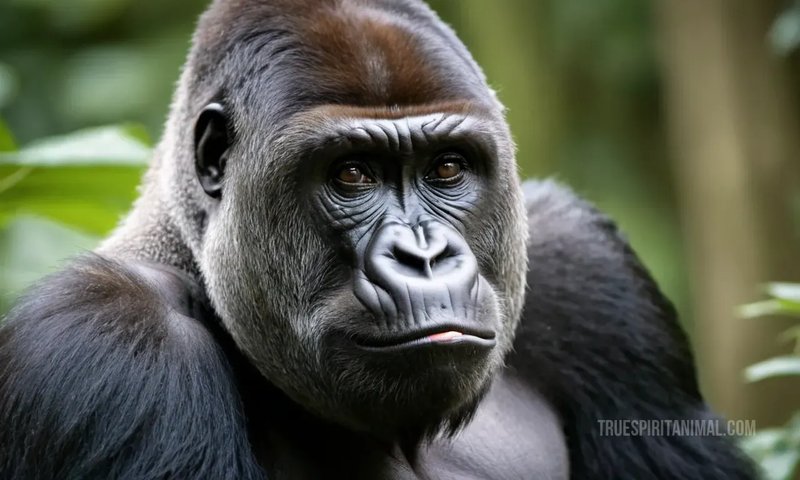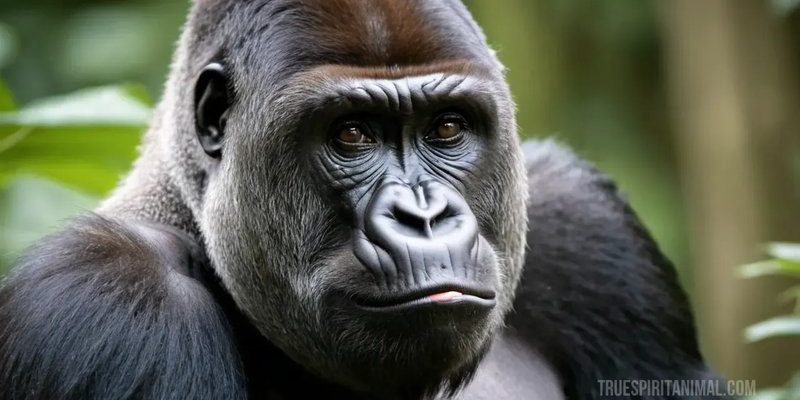
Let’s dive into how the Eastern Gorilla weaves its way through cultural expressions, from folklore to modern storytelling. You might be surprised to find out what these giant primates represent in different societies and how they connect us to the natural world. Think of it as exploring a hidden treasure trove of stories that reveal our relationship with these magnificent animals.
The Eastern Gorilla: An Overview
The Eastern Gorilla is one of two species of gorillas, native to the dense forests of Central Africa. This species is divided into two subspecies: the Eastern Lowland Gorilla and the Mountain Gorilla. These majestic beings can weigh up to 440 pounds and stand about 5.5 to 6 feet tall when upright. They primarily reside in regions like the Democratic Republic of Congo and are known for their gentle nature, despite their imposing size.
In a lot of ways, the Eastern Gorilla is the gentle giant of the jungle. They spend most of their time foraging for fruits, leaves, and flowers. Socially, they’re quite fascinating too—they live in groups led by a dominant male, often referred to as a silverback. These silverbacks are not just leaders; they’re also protectors of their families. The dynamics within these groups often inspire stories and reflections in various cultures, highlighting both leadership and community.
So, what’s the connection between these incredible animals and the cultures around them? The Eastern Gorilla is often depicted in folklore, art, and even modern media, becoming a powerful symbol through various narratives.
Folklore Surrounding Eastern Gorillas
From African tribes to global media, the Eastern Gorilla often appears as a significant figure in folklore. In many African cultures, gorillas symbolize strength and wisdom. They’re often featured in stories that teach life lessons or moral values, emphasizing respect for nature and the importance of community.
One popular story revolves around a gorilla known as “Ngaga,” a character in some Congolese folklore. Ngaga is portrayed as a wise elder who imparts knowledge to the younger animals in the forest. His character serves as a reminder of the importance of learning from those who have come before us. This narrative reflects the deep respect many cultures hold for nature and its creatures.
Additionally, tales often highlight the gorilla’s nurturing side. In one story, a mother gorilla sacrifices herself to protect her young. This portrayal not only emphasizes familial bonds but also underscores the themes of sacrifice and protection found in many cultures’ storytelling traditions. It’s a fascinating blend of nature and human emotion, reminding us of our shared values and connections.
Gorillas in Art and Literature
The Eastern Gorilla also makes a significant impact in art and literature. Artists have long been inspired by these creatures, using their imagery to convey themes of strength, resilience, and the connection between humans and nature. You’ve probably seen gorilla illustrations in natural history museums or children’s books, often depicted as powerful, wise, and sometimes humorous characters.
In literature, gorillas have been used as symbols in various contexts. For instance, in the book “The One and Only Ivan” by Katherine Applegate, a gorilla named Ivan is portrayed as an intelligent and empathetic being. His character not only captivates readers but also sheds light on issues like captivity and the need for animal rights. Through Ivan’s voice, readers are invited to reconsider their views on wildlife and the environment.
This artistic representation of the Eastern Gorilla highlights the creature’s complexity, transitioning them from mere wildlife to symbols of broader societal themes. It’s interesting how these stories influence our understanding of not just gorillas, but the world around us.
Modern Media Representations
In today’s digital age, the Eastern Gorilla continues to capture the imagination of filmmakers and content creators. Documentaries like “Virunga” showcase the beauty and struggle of these gorillas amidst the backdrop of their natural habitat. These visual narratives not only raise awareness about the Eastern Gorilla’s plight but also inspire people to take action for conservation.
Furthermore, animated films often portray gorillas in a light-hearted manner, such as in the movie “Sing,” where a gorilla named Johnny is trying to break free from the stereotypes tied to his imposing family. Stories like Johnny’s resonate with audiences because they explore themes of identity and the fight against societal expectations. Through these modern representations, we see the Eastern Gorilla evolving not just as a wild animal but as a relatable character whose journey reflects our own struggles and dreams.
Cultural Conservation Efforts
The representation of the Eastern Gorilla in culture and folklore plays a vital role in conservation. When communities engage with the narratives surrounding these creatures, they develop a sense of responsibility to protect them. Conservation programs often use storytelling to raise awareness about the Eastern Gorilla’s endangered status, fostering a connection between people and wildlife.
For example, local tribes may share stories about gorillas to highlight their importance in the ecosystem. These narratives can boost local involvement in conservation efforts, leading to more sustainable practices and protections. When people feel emotionally connected to these animals, they’re more likely to support initiatives aimed at preserving their habitat.
Moreover, international organizations rely on these cultural stories to educate younger generations. By weaving the Eastern Gorilla’s symbolism into educational programs, children learn to respect and protect wildlife from a young age. This connection between culture and conservation is crucial for the survival of these magnificent creatures.
The Future Representation of Eastern Gorillas
As we look ahead, the Eastern Gorilla’s representation in culture and folklore will likely continue evolving. With growing concerns over climate change and habitat destruction, new stories will emerge reflecting these challenges.
You might wonder how our actions today will shape these cultural narratives in the future. As more individuals become aware of the Eastern Gorilla’s plight, it’s likely their stories will transform from tragic tales of loss to hopeful narratives of recovery and resilience. The role these creatures play in our collective consciousness can influence conservation efforts and inspire future generations to act.
In essence, the Eastern Gorilla is not just a creature of the forest; it’s an important entity in many stories we tell. The tales surrounding them connect us to the broader themes of strength, resilience, and the importance of harmony with nature. Understanding their representation can enhance our appreciation for these remarkable animals and encourage action to ensure their survival.
Wrapping Up
The Eastern Gorilla’s place in culture and folklore is a rich tapestry of stories that reflect our values, beliefs, and our connection to nature. From wise figures in folklore to symbols of resilience in modern media, these magnificent creatures capture our hearts and minds.
By understanding and appreciating their cultural significance, we can foster a deeper connection to wildlife and advocate for conservation efforts. So next time you see a gorilla, whether in a movie, a book, or even in the wild, remember the stories and values they represent. These gentle giants deserve our respect and protection, and through stories, we can ensure their legacy lives on.

